All Solutions
Page 664: Assessment
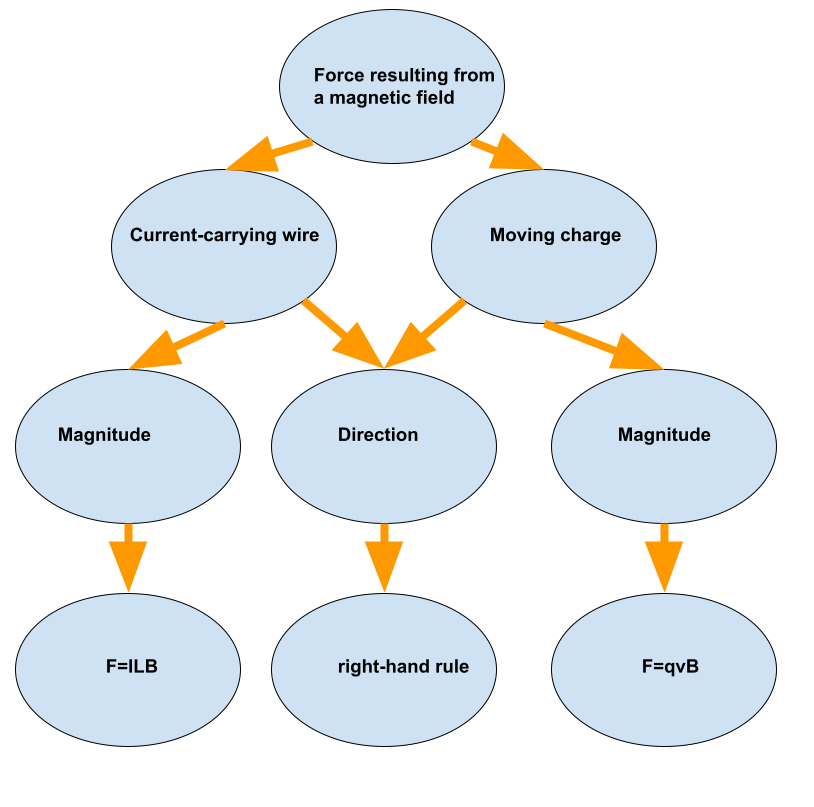
The magnitude of the force on a moving charge is given by $F=qvB$.
The direction of the force is in both cases obtained via right-hand rule.
Either the magnets will resist being pushed together, or they will snap together.
Main elements from this group are **iron, nickel and cobalt** and their alloys.
– Nickle
-Cobalt
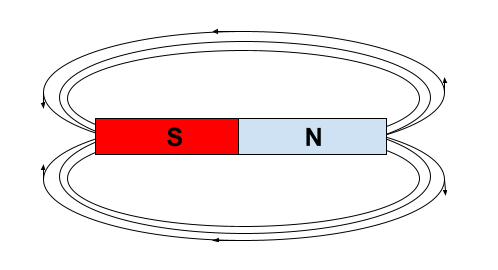
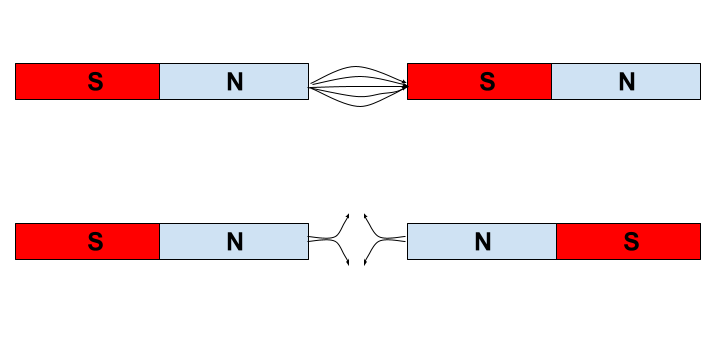
If one is cut in half, the new endings faces will become the new north or south poles of the smaller pieces.
Therefore, **no, we will not end up with a separate N and S poles**.
$$B=frac{mu_0 I}{2R}$$
From this equation it can be concluded that the larger the distance $R$, the weaker the field.
It is a result of a sum of magnetic fields produced by smaller segments of a wire.
Since the inner parts are closer, the magnetic fields of the wire are **closer** and therefore there is a lot more overlap, making thus a stronger magnetic field than it is on the outer parts of the loop.
The second right-hand rule helps us determine the magnetic field made by a current in a straight wire **curls** around the wire in a ring.
Magnetic property of material is a **macroscopic property** in which all smaller pieces are alligned in a way to create a difference in charge between two sides.
This means that microscopically one piece can act as a magnet, but if macroscopically all those pieces are **not alligned** in a way needed to create a larger magnet, the large piece will **not be a magnet**.
Magnetism is a macroscopic property of material. It is caused by a correctly alligned smaller particles in a way that one side of the material has different charge than the other. All in all it is relatively structured configuration.
Right-hand rules are a technique used for easier determining the direction of electromagnetic forces.
Field-fingers
Force-palm
$$F=ILBsin (theta)$$
If the $sin (theta) =0$ the force will be zero even with magnetic field present. This is possible if the magnetic field and the wire are co-linear.
So, **no, we cannot conclude that there is no magnetic field**.
A galvanometer is an electromechanical measuring instrument for electric current. It works by deflecting a pointer in response to an electric current flowing through a coil in a constant magnetic field.
By simply putting it in the water, the ball will orientate in such a way to fit the effects of the Earth’s magnetic field, thus becoming a compass.
If it **is permanent magnet**, now the like poles will be facing each other and the magnets will **repel**.
If they still **attract**, the piece of metal is not permanent but rather **temporary magnet**.
2) We could attach a dynamometer to the wire and bring a strong magnet were close to it. Based on which side the force acts on the wire, we can get the direction of the current as from the third right hand rule.
2) Dynamometer
$$
F=ILBsintheta
$$
if we run the current along the magnetic field lines, i.e. in parallel with the magnetic field the force will be zero.
$$
B=frac{mu_0I}{2pi r}
$$
a) If the currents are in opposite directions the current will be larger in the space between the currents. We see this from the right-hand rule and it is show in the picture.
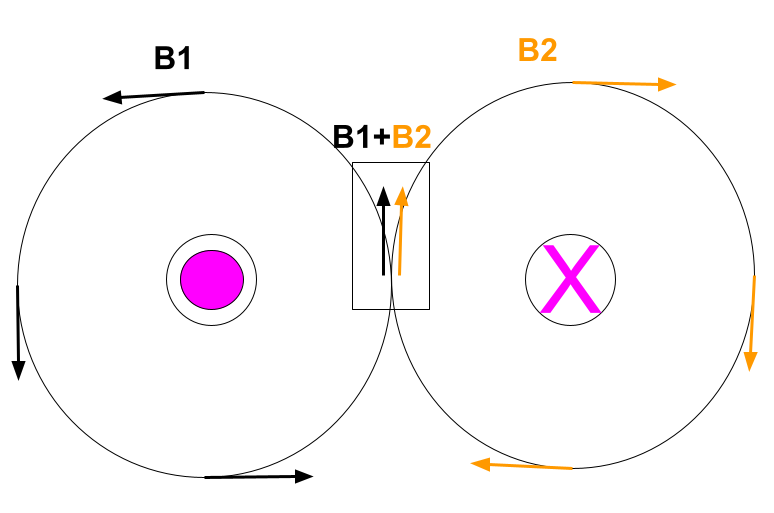
$$
B=B_1+B_2
$$
With the condition
$$
B=2B_1
$$
That implies that
$$
B_1=B_2
$$
$$
frac{mu_0I}{2pi r}=frac{mu_0I}{2pi (d-r)}
$$
$$
frac{1}{ r}=frac{1}{(d-r)}
$$
so finally we have that
$$
r=d-r
$$
$$
boxed{r=frac{d}{2}}
$$
So the field is twice as strong exactly at the middle plane between the wires.
c) The same logic can be repeated for the case when the currents are flowing in the same direction.
Then, we have that between the wires, the field is smaller and it is going to be zero only when
$$
B_1-B_2=0
$$
$$
B_1=B_2
$$
or
$$
boxed{r=frac{d}{2}}
$$
b) $r=frac{d}{2}$
c) $r=frac{d}{2}$
$$
V=IR
$$
The range of the voltages will move towards higher voltages although it will still cover the same spectrum size it will have an offset.
$vec F=qvec vtimes vec B$
However, we know that
$$
vec F =frac{dvec p}{dt}
$$
So we can write
$$
frac{dvec p}{dt}=qvec vtimes vec B
$$
Now, we can dot-multiply the equation with $vec p$ to get
$$
vec pcdot frac{dvec p}{dt}=qvec pcdot vec vtimes vec B
$$
But we know that $vec p=mvec v$ so the right side is identically zero and we have that
$$
frac{d}{dt}frac{p^2}{2m}=frac{dE_K}{dt}=0
$$
i.e. the kinetic energy is constant over time.
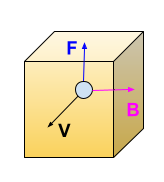
2 and 4
(The poles are at the ends of a magnet.)
b)
2
(Magnetic field lines exit from the north pole)
c)
4
(Magnetic field lines enter its south pole)
b) 2
c) 4
$$
F=ILB
$$
From it we can express the magnetic field strength as
$$
B=frac{F}{IL}
$$
If we now plug in the values we obtain the following
$$
B=frac{0.6}{10times 1.5}
$$
Finally
$$
boxed{B=0.04textrm{ T}}
$$
B=0.04textrm{ T}
$$
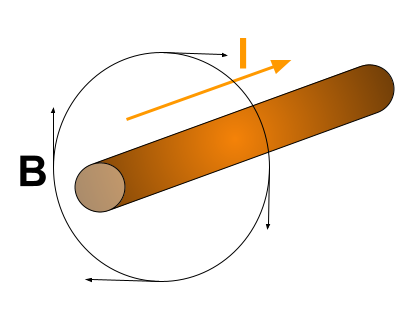

The direction of the magnetic field inside the loop is into the page.
b)
The direction of the magnetic field outside the loop is out of the page.
b) out of the page


&text{a) See the explanation.} \
&text{b) See the explanation.}
end{align*}$$
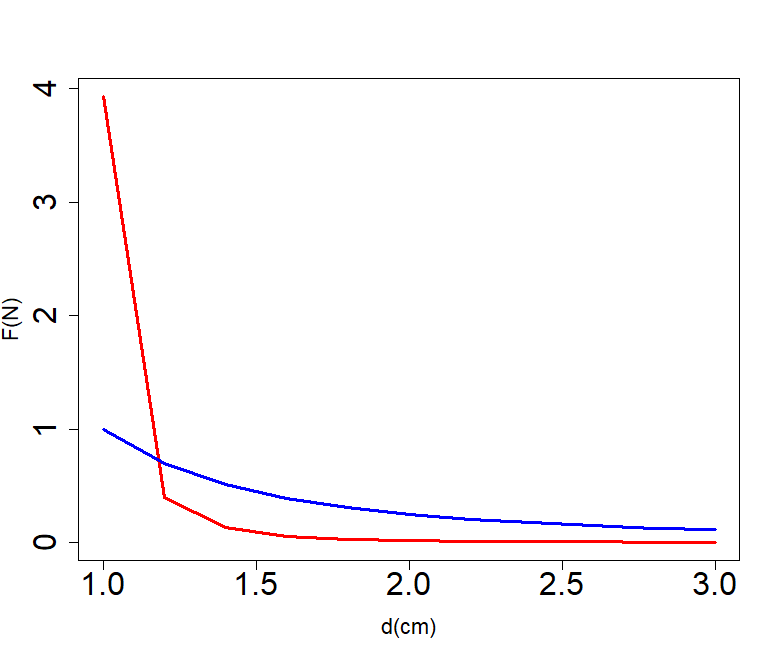
$$
F=ILB
$$
From it we can express the magnetic field strength as
$$
B=frac{F}{IL}
$$
If we now plug in the values we obtain the following
$$
B=frac{0.4}{8times 0.5}
$$
Finally
$$
boxed{B=0.1textrm{ T}}
$$
B=0.1textrm{ T}
$$
$$
F=ILB
$$
If we now plug in the values we obtain the following
$$
F=5times 0.8times 0.6
$$
Finally
$$
boxed{F=2.4textrm{ N}}
$$
F=2.4textrm{ N}
$$
$$
F=ILB
$$
If we now plug in the values we obtain the following
$$
F=6times 0.25times 0.3
$$
Finally
$$
boxed{F=0.45textrm{ N}}
$$
F=0.45textrm{ N}
$$
$$
F = 0 N
$$
F = 0 N
$$
$$
F_B=ILB
$$
From here, we can express the current as
$$
I=frac{F_B}{LB}
$$
If we now plug in the values we obtain the following
$$
I=frac{1.8}{625times 0.4}
$$
Finally
$$
boxed{I=7.2times 10^{-3}textrm{ A}}
$$
I=7.2times 10^{-3}textrm{ A}
$$
$$
F_B=ILB
$$
From here, we can express the current as
$$
I=frac{F_B}{LB}
$$
If we now plug in the values we obtain the following
$$
I=frac{0.12}{0.8times 5times 10^{-5}}
$$
Finally
$$
boxed{I=3times 10^{3}textrm{ A}}
$$
I=3times 10^{3}textrm{ A}
$$
$$
F_B=ILB
$$
From here, we can express the wire’s length as
$$
L=frac{F_B}{IB}
$$
If we now plug in the values we obtain the following
$$
L=frac{3.6}{7.5times 0.8}
$$
Finally
$$
boxed{L=0.6textrm{ m}}
$$
L=0.6textrm{ m}
$$
$$
F=ILB
$$
If we now plug in the values we obtain the following
$$
F=225times 1times 5times 10^{-5}
$$
Finally
$$
boxed{F=0.011textrm{ N}}
$$
b) By using the third right-hand rule, we have that the force on the wire is pointing $boxed{downwards}$.
c) This force would not affect the construction since the gravitational force is much stronger.
b) Downwards
c) No
$$
V=IR
$$
from here we can express the resistance as
$$
R=frac{V}{I}=frac{10}{50times 10^{-6}}
$$
$$
boxed{R=2times 10^5Omega}
$$
b) In a voltmeter, the multiplier is connected to galvanometer in series so we have that
$$
R=R_G+R_M
$$
We write that the multiplier resistance is
$$
R_M=R-R_G=2times 10^5-10^3
$$
$$
boxed{R_M=1.99times 10^5Omega}
$$
textrm{a) }R=2times 10^5Omega
$$
$$
textrm{b) }R_M=1.99times 10^5Omega
$$
$$
V=I_GR
$$
from here we see that the voltage across the galvanometer is
$$
V=50times 10^{-6}times 10^3
$$
$$
boxed{V=50times 10^{-3}textrm{ V}}
$$
b) To find the resistance we simply use
$$
R=frac{V}{I}=frac{50times 10^{-3}}{10times 10^3}
$$
$$
boxed{R=5Omega}
$$
c) In an ammeter, the shunt is connected to the galvanometer in parallel so we have that
$$
R=frac{R_GR_S}{R_G+R_S}
$$
Now, we have that the shunt’s resistance is
$$
R_S=frac{R_GR}{R_G-R}
$$
$$
R_S=frac{5times 1000}{1000-5}
$$
Finally, we have that
$$
boxed{R_S=5.03Omega}
$$
V=50times 10^{-3}textrm{ V}
$$
$$
R=5Omega
$$
$$
R_S=5.03Omega
$$
$$
vec F=qvec vtimes vec B=qvB
$$
If we now plug in the values we obtain the following
$$
F=1.6times 10^{-19}times 2.5times 10^6times 6times 10^{-2}
$$
Finally
$$
boxed{F=24times 10^{-15}textrm{ N}}
$$
F=24times 10^{-15}textrm{ N}
$$
$$
vec F=qvec vtimes vec B=qvB
$$
From here, we can express the magnetic field as
$$
B=frac{F}{qv}
$$
If we now plug in the values we obtain the following
$$
B=frac{5times 10^{-12}}{1.6times 10^{-19}times 4.21times 10^7}
$$
Finally
$$
boxed{B=0.74 textrm{ T}}
$$
b) The acceleration of the muon can be found via Newton’s second law
$$
vec F=mvec a
$$
$$
a=frac{F}{m}=frac{5times 10^{-12}}{1.88times 10^{-28}}
$$
which gives that
$$
boxed{a=2.7times 10^{16}frac{textrm{ m}}{textrm{ s}^2}}
$$
textrm{a) }B=0.74times textrm{ T}
$$
$$
textrm{b) }a=2.7times 10^{16}frac{textrm{ m}}{textrm{ s}^2}
$$
$$
vec F=qvec vtimes vec B=qvB
$$
From here, we can express the velocity as
$$
v=frac{F}{qB}
$$
If we now plug in the values we obtain the following
$$
v=frac{4.1times 10^{-13}}{1.6times 10^{-19}times 0.61}
$$
Finally
$$
boxed{v=4.2times 10^6frac{textrm{ m}}{textrm{ s}}}
$$
v=4.2times 10^6frac{textrm{ m}}{textrm{ s}}
$$
$$
vec F=qvec vtimes vec B=qvB
$$
On the other hand the total charge $q$ can be expressed as $q=ne$ where $e$ is an elementary charge.
From here, we can express the number of charges aas
$$
n=frac{F}{evB}
$$
If we now plug in the values we obtain the following
$$
n=frac{5.78times 10^{-16}}{1.6times 10^{-19}times 5.65times 10^4 times 0.032}
$$
Finally
$$
boxed{n=2}
$$
n=2
$$
$$
vec F=I vec Ltimes vec B
$$
$$
F=ILBsintheta
$$
and since $theta=90^circ$ we have
$$
F=ILB
$$
a) When the switch is open, the current is zero so the force is
$$
boxed{F=0}
$$
b) When the switch is closed the force is given with the formula
$$
F=ILB
$$
where $L$ corresponds to the part of the wire equal to the width of the magnet and $I=frac{V}{R}$ so we have
$$
F=frac{VLB}{R}=frac{24times 0.075times 1.9}{5.5}
$$
Finally, we have that
$$
boxed{F=0.62textrm{N}}
$$
and the direction by using the third right-hand rule is upwards.
c) If the battery is reversed, the magnitude of the force remains the same
$$
boxed{F=0.62textrm{N}}
$$
but this time its direction is downwards.
d) In this particular case, we have an additional resistor in series so we have
$$
F=frac{VLB}{2R}=frac{24times 0.075times 1.9}{2times 5.5}
$$
Which gives
$boxed{F=0.31textrm{N}}$
and the direction is once more upwards.
$textrm{b) Up, }F=0.62textrm{N}$
$textrm{c) Down, }F=0.62textrm{N}$
$$
textrm{d) Up, }F=0.31textrm{N}
$$
$$
V=I_GR
$$
from here we see that the voltage across the first galvanometer is
$$
V_1=50times 10^{-6}times 855
$$
$$
V=43times 10^{-3}textrm{ V}
$$
To find the resistance of the ammeter we will simply use
$$
R_1=frac{V_1}{I_A}=frac{43times 10^{-3}}{100times 10^{-3}}
$$
$$
R_1=0.43Omega
$$
In an ammeter, the shunt is connected to the galvanometer in parallel so we have that
$$
R=frac{R_GR_S}{R_G+R_S}
$$
Now, we have that the shunt’s resistance is
$$
R_{S1}=frac{R_GR_1}{R_G-R_1}
$$
$$
R_{S1}=frac{0.43times 855}{855-0.43}
$$
Finally, we have that
$$
boxed{R_{S1}=0.43Omega}
$$
$$
V_2=500times 10^{-6}times 855
$$
$$
V=430times 10^{-3}textrm{ V}
$$
To find the resistance of the ammeter we will simply use
$$
R_2=frac{V_2}{I_A}=frac{430times 10^{-3}}{100times 10^{-3}}
$$
$$
R_2=4.3Omega
$$
Now, we have that the shunt’s resistance is
$$
R_{S2}=frac{R_GR_2}{R_G-R_2}
$$
$$
R_{S2}=frac{4.3times 855}{855-4.3}
$$
Finally, we have that
$$
boxed{R_{S2}=4.3Omega}
$$
c) The lower the shunt resistance the better so the first galvanometer is better.
textrm{a) }R_{S1}=0.43Omega
$$
$$
textrm{b) }R_{S2}=4.3Omega
$$
$$
textrm{c) The first galvanometer should be better. }
$$
$$
vec F=qvec vtimes vec B=qvB
$$
If we now plug in the values we obtain the following
$$
F=1.6times 10^{-19}times 2.5times 10^7times 6times 10^{-1}
$$
Finally
$$
boxed{F=2.4times 10^{-12}textrm{ N}}
$$
F=2.4times 10^{-12}textrm{ N}
$$
$$
vec F=qvec vtimes vec B=qvB
$$
If we now plug in the values we obtain the following
$$
F=1.6times 10^{-19}times 2.5times 10^7times 6times 10^{-1}
$$
Which gives that
$$
F=2.4times 10^{-12}textrm{ N}
$$
The acceleration of the $beta$-particle can be found via Newton’s second law
$$
vec F=mvec a
$$
$$
a=frac{F}{m}=frac{2.4times 10^{-12}}{9.11times 10^{-31}}
$$
Finally
$$
boxed{a=2.6 times 10^{18}frac{textrm{ m}}{textrm{ s}^2}}
$$
a=2.6 times 10^{18}frac{textrm{ m}}{textrm{ s}^2}
$$
$$
vec F=qvec vtimes vec B=qvB
$$
If we now plug in the values we obtain the following
$$
F=1.6times 10^{-19}times 8.1times 10^5times 16
$$
Finally
$$
boxed{F=2.1times 10^{-12}textrm{ N}}
$$
To find the direction we apply the first right-hand rule which says that if the electron is moving south and the field is pointing west the force acting on the electron will point up.
textrm{Up, }F=2.1times 10^{-12}textrm{ N}
$$
$$
F=ILB
$$
However, we do not know the value of the current and the length of the wire. The first one, we find by applying Ohm’s law
$$
I=frac{V}{R}=frac{15}{8}=1.875textrm{A}
$$
The second one, the length of the wire, we find from the fact that the the length of one turn is
$$
C=pi D
$$
and there are 250 turns so
$$
L=250pi D=250times 3.14times 0.025=19.625textrm{m}
$$
Now, we can finally calculate the force on the wire
$$
F=1.875times 19.625times 0.15
$$
Which makes that
$$
boxed{F=5.52textrm{N}}
$$
F=5.52textrm{N}
$$
$$
vec F=Ivec Ltimes vec B
$$
So the magnitude is given as
$$
F=ILBsintheta
$$
a) If we now plug in the values when $theta=90^circ$ we obtain the following
$$
F=15times 0.25times 0.85times sin90^circ
$$
Finally
$$
boxed{F=3.2textrm{ N}}
$$
b) When we plug in the values when $theta=45^circ$ we obtain the following
$$
F=15times 0.25times 0.85times sin45^circ
$$
Finally
$$
boxed{F=2.3textrm{ N}}
$$
c) In the case when $theta=0^circ$ we obtain the following
$$
F=15times 0.25times 0.85times sin0^circ
$$
Finally
$$
boxed{F=0textrm{ N}}
$$
textrm{a) }F=3.2textrm{ N}
$$
$$
textrm{b) }F=2.3textrm{ N}
$$
$$
textrm{c) }F=0textrm{ N}
$$
$$
vec E=-grad varphi
$$
it’s direction is from $P_2$ to $P_1$.
b) At the point $P_2$ the electrostatic potential energy due to the potential difference between the plates is converted fully to electron’s kinetic energy i.e. it has to hold that
$$
qV=frac{1}{2}mv^2
$$
So the speed of the electron is
$$
v=sqrt{frac{2qV}{m}}=sqrt{frac{2times 1.6times 10^{-19}times 20times 10^3}{9.11times 10^{-31}}}
$$
Finally,
$$
boxed{v=8.4times 10^7frac{textrm{m}}{textrm{s}}}
$$
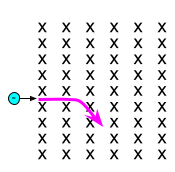
textrm{a) From $P_2$ to $P_1$}
$$
$$
textrm{b) }v=8.4times 10^7frac{textrm{m}}{textrm{s}}
$$
$$
textrm{c) It will move downards initiating circular clockwise motion}
$$
$$
B=2times 10^{-7}frac{I}{d}
$$
a) In the case of an average house wiring we have that $Ileq10$A so at $d=0.5$m we get
$$
B=2times 10^{-7}frac{10}{0.5}
$$
$$
boxed{B=4times 10^{-6}textrm{T}}
$$
whereas the the magnetic filed of the earth is
$$
B_E=50times 10^{-6}textrm{T}
$$
So it is one order of magnitude stronger than the magnetic field in our houses.
b) Now, we can do the same for the high-voltage power lines
$$
B=2times 10^{-7}frac{200}{20}
$$
which gives
$$
boxed{B=2times 10^{-6}textrm{T}}
$$
and that is 2 times less than magnetic field in our homes.
c) To estimate this let’s assume that the distance to the fetus is 2 cm. Then the above equation becomes
$$
B=2times 10^{-7}frac{1}{0.02}
$$
$$
boxed{B=1times 10^5textrm{T}}
$$
And the Earth’s filed is 5 times stronger than this.
textrm{a) }B=4times 10^{-6}textrm{T}
$$
$$
textrm{b) }B=2times 10^{-6}textrm{T}
$$
$$
textrm{c) }B=1times 10^5textrm{T}
$$
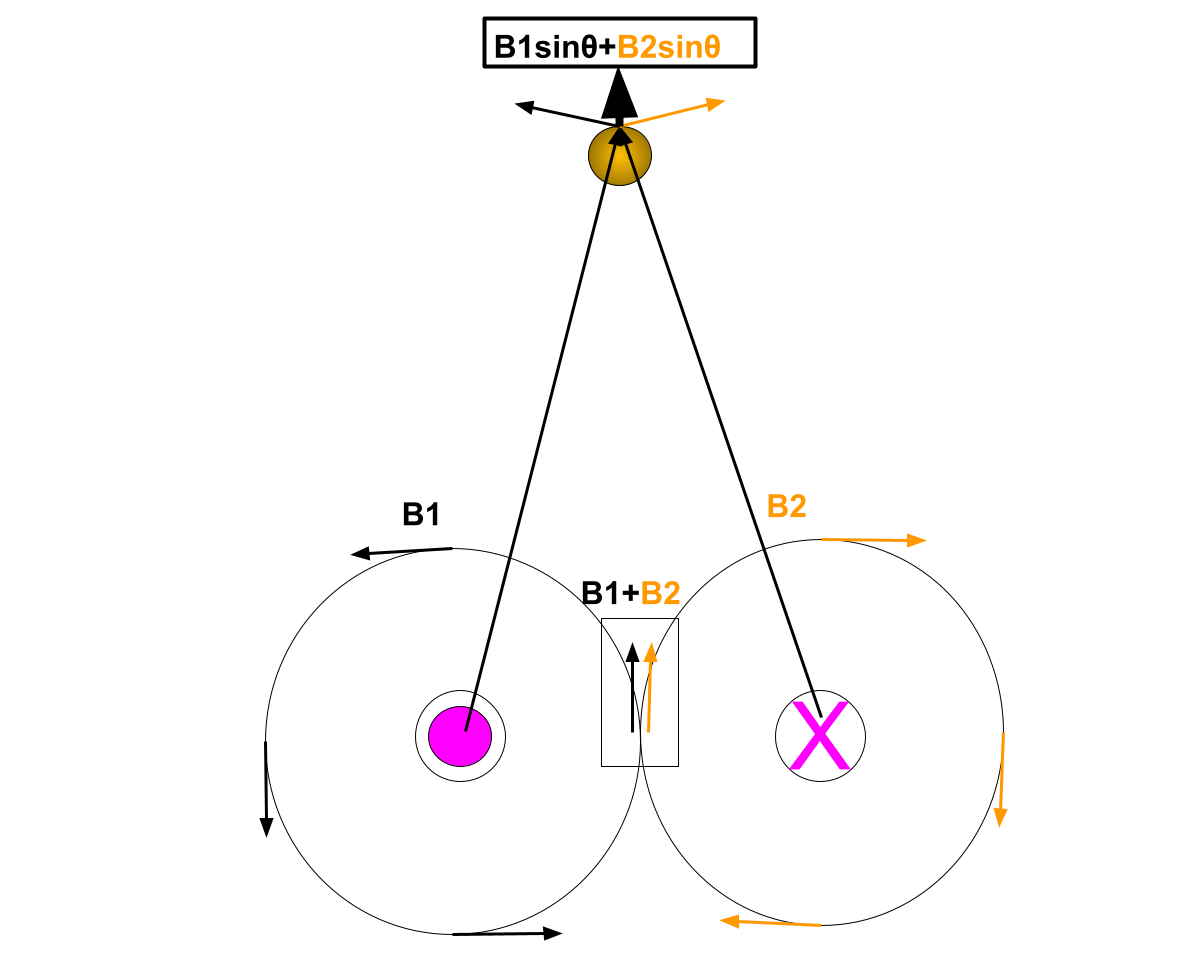
$$
sintheta=frac{d}{2R}=frac{0.01}{2times 0.1}=0.05
$$
So the magnetic field is
$$
B_{tot}=2Bsintheta=2times frac{2times 10^{-7}times 10}{0.1}times 0.05
$$
Finally, we have that
$$
boxed{B_{tot}=2times 10^{-6}textrm{T}}
$$
B_{tot}=2times 10^{-6}textrm{T}
$$
Since it first appeared in 1911 the idea of superconducting magnetism had to wait for almost half a century until it was achieved in 1955. Furthermore, breakthroughs in material science allowed for an easy manufacturing of alloys that could serve in superconducting magnets thus shifting the research focus to the improvement of the properties which resulted in all-time world record of the magnetic field strength and set it to 45.5 T.
Superconducting magnets find their use in numerous processes and they are part of the solution for many practical problems around us. They can be found in devices like NMR spectrometers, mass spectrometers, MRI, fusion reactors etc. In the last decade they found a down-to-Earth application in Japanese railways where the first superconducting magnetic levitation train was set operational achieving a near airplane speed of 600 km/h. Future applications can be assumed to be limitless, from taking part in computer components thus making them faster and more energy efficient till participating in innovative transport systems it is easy to imagine that superconducting magnets will take more important role in the near future.
However, this is not a straight-forwards path. The biggest obstacles in creating superconductive magnets are still very low, cryogenic temperatures needed for their function. Albeit the high-temperature superconductivity was discovered, the “”high-temperatures” are still well below common temperatures and this represents operational problems till this day..
$$
W=qV=6.4times 10^{-3}times 2500
$$
Which gives that
$$
boxed{W=16textrm{ J}}
$$
W=16textrm{ J}
$$
$$
P=IV
$$
and if the voltage is constant the change in power is
$$
Delta P=VDelta I =120times(2.3-1.3)
$$
Finally,
$$
boxed{Delta P=120textrm{W}}
$$
Delta P=120textrm{W}
$$
$$
frac{1}{R_p}=frac{1}{R}+frac{1}{R}+frac{1}{R}=frac{3}{R}
$$
$$
R_p=frac{R}{3}
$$
and for the part connected in series
$$
R_s=R+R=2R
$$
Now, the equivalent resistance of the circuit is
$$
R_{eq}=R_p+R_s=frac{R}{3}+2R=frac{7R}{3}
$$
Now, we can plug in the given values
$$
R_{eq}=frac{7times 55}{3}
$$
Finally,
$$
boxed{R_{eq}=128Omega}
$$
R_{eq}=128Omega
$$

